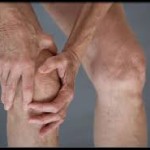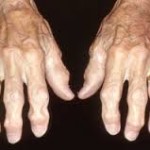 Osteoarthritis is one of the most common forms of arthritis diagnosed in the United States today. In fact, the Arthritis Foundation estimates that nearly 60% of the diagnoses of arthritis can be attributed to osteoarthritis. This is a disease of the joints and not systemic, like other forms of arthritis, such as lupus or rheumatoid arthritis.
Osteoarthritis is one of the most common forms of arthritis diagnosed in the United States today. In fact, the Arthritis Foundation estimates that nearly 60% of the diagnoses of arthritis can be attributed to osteoarthritis. This is a disease of the joints and not systemic, like other forms of arthritis, such as lupus or rheumatoid arthritis.
The most common symptom is that the joints become painful and sore after repetitive use and is usually worse at the end of the day. Individuals can also experience swelling, warmth and creaking during use. The joint becomes painful after long periods of inactivity, such as sleep all night or sitting for long periods. The actual symptoms will vary from person to person. Some can become completely debilitated while others may suffer remarkably few symptoms in spite of dramatic changes on their x-rays. (1)
Osteoarthritis is more common in the weight bearing and working joints such as the hip, knees, feet and hands but can also occur in the elbow and shoulder. The risk of developing osteoarthritis (OA) will increase as an individual ages. However, some injuries can also lead to OA in young people, such as shoulder dislocation.
 Individuals who develop OA will have pain as their key symptom, as well as a decreased range of motion in the joint. The exact cause of the condition hasn’t been identified by physicians but do know that it is often related to aging and the degeneration of the cartilage over time. As we get older the water content in the cartilage will increase and the protein decreases. Eventually the cartilage begins to flake or form crevasses causing the bones to have more contact, which in turn results in pain, swelling and inflammation.
Individuals who develop OA will have pain as their key symptom, as well as a decreased range of motion in the joint. The exact cause of the condition hasn’t been identified by physicians but do know that it is often related to aging and the degeneration of the cartilage over time. As we get older the water content in the cartilage will increase and the protein decreases. Eventually the cartilage begins to flake or form crevasses causing the bones to have more contact, which in turn results in pain, swelling and inflammation.
Individuals can also experience secondary osteoarthritis from another disease or condition, such as obesity, trauma, surgery, congenital abnormalities, gout or diabetes. In fact, next to aging, obesity is the most powerful risk factor for the development of OA in the knees and hips. (2)
At this time there is no conclusive diagnostic test or cure for OA. Blood tests may be performed to exclude other diseases that may have caused secondary OA as well as to exclude other diseases that can mimic OA. X-rays will be performed to exclude other causes and assist in a decision about surgical intervention. Arthrocentesis, performed in the doctor’s office, will remove joint fluid and analyze it to exclude gout, infection and other causes for the symptoms as well as to relieve the pressure of fluid build up.
References:
(1) Rheumatic Diseases Clinics of North America: The Symptoms of Osteoarthritis and the Genesis of Pain
http://www.ncbi.nlm.nih.gov/pubmed/18687276
(2) MayoClinic: Osteoarthritis: Risk Factors
http://www.mayoclinic.com/health/osteoarthritis/DS00019/DSECTION=risk-factors
(3) University of Maryland Medical Center: Osteoarthritis
http://www.umm.edu/altmed/articles/osteoarthritis-000118.htm
| Advertisement | |
|
|



Leave a Reply